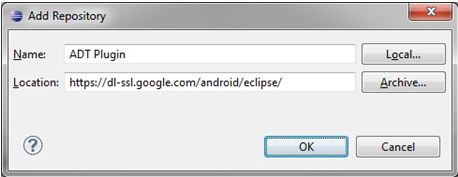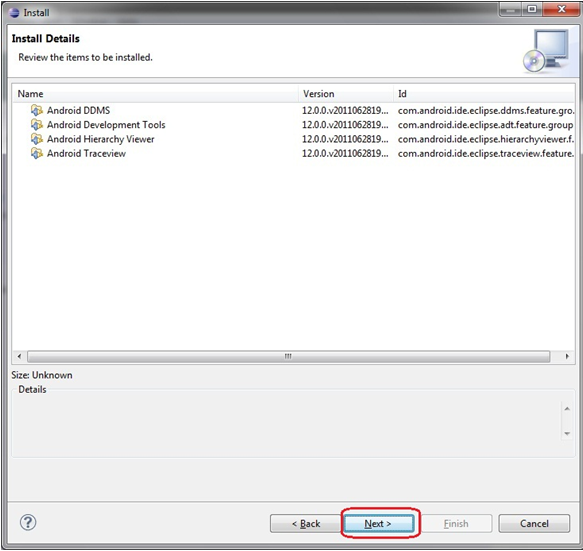Introduction to android development tutorial for beginners
Welcome to Android
Development Tutorial for Beginners. This blog will be a complete guide for
beginners. If you don’t have any knowledge in android, don’t worry we will help
you to grow your career in android development. This is the place, where you
can learn step by step procedure for android application development. We will
provide you with varieties of android examples with source codes.
Surely, this blog
will help people who want to start programming Android and have no prior
experience with it.
What is Android?
Before starting android development, we must have some idea
about what is Android? I know you must have idea about Windows, Linux and
Mac Operating system. Exactly you are right, Android is also an operating
system. In other words, Android is a Linux-based operating system designed
primarily for touch screen mobile devices such as smart phones and tablet
computers. Initially developed by Android, but latter on Google financially backed
and later purchased in 2005.
ANDROID Version History by API Level.
ADT
ANDROID Version History by API Level.
ADT
You can easily download ADT Bundle from Android developer site.
By default Eclipse is not really
good suited for Android application development. ADT is a plug-in that
configures the environment to use Android SDK and enables convenient
development.
Launch Eclipse (<Android>\eclipse\eclipse.exe). When you
launch Eclipse for the first time it will ask you for a working directory where
it will store project files. Again, I propose not to walk far away, create <Android>\workspace directory and choose it.
Ok, now Eclipse is running.
Let’s download ADT plug-in.
Go to Help -> Install New Software
Press Add button
in the upper right corner
Enter "ADT Plug-in" in
the Name field.
Enter URL https://dl-ssl.google.com/android/eclipse/ address
in the Location field.
Press OK and
wait until Developer Tools appear
(If there are any troubles use http instead of https)
Tick Developer Tools and
press next.
Now we can see the components that will be installed, press next again.
Read and accept the license agreement and click Finish.
The download of components is starting. If the Security Warning that the authenticity or validity of the software can’t be established pops up, click OK.
On my computer the process
lasted approximately a minute.
After it is finished you have to restart Eclipse - Restart Now
After restarting Eclipse if
shows the following dialog:
The first item is for those who,
for some reason, didn’t download and install SDK in the second step of these
instructions. Eclipse can do it on its own. And additionally it will download
the latest android platform. It also offers to download 2.1 platforms as the
most widely supported platform.
We are interested in the second item - it allows us to point
there we extracted in the step 2. It’s <Android>\android-sdk-windows. Press Next
In the window that appears
choose whether to send statistic to google or not. It will not influence the
work at all.
Choose Yes or No and click
Finish.
Then we are informed that our
SDK Platform Tools component is missing and they offer us to go to SDK Manager
and download it. Press OK.
5. Android Platforms
Let’s launch SDK Manager
It is proposed to choose
components for download via the internet. On the right side for each component
is stated whether it’s downloaded or not. Ok, so what will we download?
It is obligatory to download the
contents of the Tools folder that hasn’t been downloaded yet. Also in the
Extras folder (at the end of the list) tick Android Support Library item if
it’s there.
For all the other Android versions you need tick only SDK
Platform. Take into account that each platform can weight up 150 MB!!! If you
do that at work system administrator will come for you :) For the first lessons
we will need only platforms 2.2 (API 8) and 2.3.3 (API 10). For
now you can download only them.
For platforms with versions 4.X
choose SDK Platform and ARM EABI v7a System Image (for work with emulator).
If you have enough traffic adds
these items for each platform:
Samples for SDK - source code of sample applications
Google APIs by Google Inc. - this is needed if you would like to work with Google applications (Maps, Navigation etc.)
Samples for SDK - source code of sample applications
Google APIs by Google Inc. - this is needed if you would like to work with Google applications (Maps, Navigation etc.)
If you don’t care about the
traffic at all - tick everything. But you will have to wait for a long time.
And it would weigh more than one gigabyte.
When you have selected everything - click Install X packages in the bottom right corner.
In the new window we accept that you want to download it all - Accept All. Here you
can also see the size of components and reject some.
Press Install - the indicator was displayed and the log opened.
With my choice of components, I’ve been waiting for 20 minutes. After this
process the phrase Done Loading Packages appeared.
The installation has finished.
Close the log and SDK Manager.
Just for the info - my new
components weighted 1.5 GB.
After this restart Eclipse and
that’s it. After performing these steps we have got a development environment
in which we can code Android applications. Maybe these actions may seem dull
and boring but, unfortunately you cannot avoid this. It will be much more fun
further. If something doesn’t work or the error pops up - try googling it, you
are for sure not the first one who is facing this problem and there is already
a solution on the internet. Or write on the forum.
In the next lesson we will setup Android Virtual Device (AVD) in
Eclipse, create our first application and
launch it. AVD is a smart phone emulator with Android operating system, where
you can run and test your applications. So there is no point connecting your smart
phone each time) we will also look through the application structure.
Note:
If the following window didn’t
appear:
Or you accidentally closed it -
everything is fine. You can specify SDK directory manually.
In Eclipse go to Windows -> Preferences
Choose Android on
the left, click Browse
Specify the directory where we extracted SDK - <Android>\android-sdk-windows.
Click Apply.
We are told that the component is missing - close this message
and click OK
I got this window popped up:
It informs that if we want to improve
the product, we can send Google the usage statistics. It’s up to you and you
can always change it in your preferences. I left the tick, I am not greedy)
After this you can go to SDK Manager (In Eclipse go to Window > Android SDK Manager) and download platforms.
Hope this Tutorial helped you..
We will provide more updates soon...






























0 comments:
Post a Comment